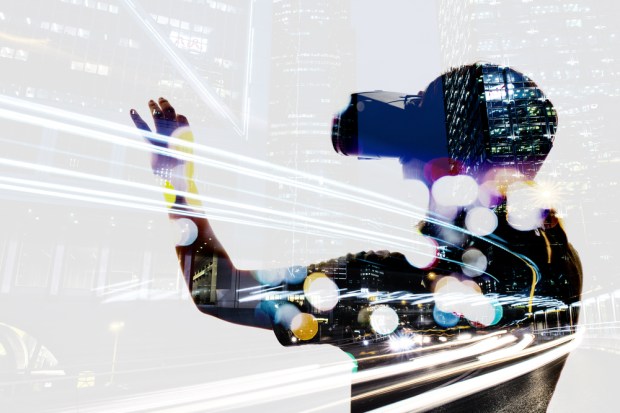Barneys New York Looks To VR To Carry Spring Collection

Some retailers say they don’t want to jump on the latest techy bandwagon just to jump on it. Others look for ways to make the bandwagon work for them.
Virtual reality (VR) has been no different. While some see it as a fad or a gimmick, Barneys New York has become the latest to take the tech very, very seriously and turn it into a force for good. The luxury specialty retailer announced its spring campaign “Mantle” this week: a virtual reality experience with the Martha Graham Dance Company and Samsung Electronics America, Inc.
The virtual reality short film reportedly marries fashion, tech and contemporary dance, premiering exclusive designer looks to Barneys New York customers straight from the runway via the Oculus Gear VR, Samsung’s VR app and Barneys’ website.
According to a press release, “Mantle” stars four principal dancers and backup dancers clad in the modern designs of Prabal Gurung, The Row and Craig Green, among others. It was filmed with a 360-degree camera, creating an immersive experience for Barneys customers that executives say is consistent with Barneys’ ongoing focus on fashion and its role within culture.
“No other medium can really envelop consumers into a brand universe and create brand affinity like virtual reality,” said Zach Overton, VP of Brand Experience, Samsung Electronics America.
It would seem that other major retailers agree. For instance, Walmart launched its tech incubator Store No 8 last year with a vision to develop VR, personalized shopping strategies and delivery advancements, such as drone and autonomous vehicle technology.
Store No 8’s strategy is not to develop tech in-house, but to acquire and support startups that can deliver that sort of tech. It has now pulled in a virtual reality startup, Spatialand, to spearhead VR product development for the big box retailer’s stores and website.
Lori Fleet, Store No 8 SVP, Next Gen Retail, said virtual reality “is a critical technology in providing customers information and tools for the purchasing decision … one that will change how people will shop.”
Walmart also uses virtual reality to evaluate new in-store merchandising, like shelving arrangements and signage. Customers can complete a virtual shopping exercise on their computer and follow the path to purchase decisioning just as they would do in a physical store, which helps the retailer understand which concepts and strategies are resonating most with customers — with no need to build a mock store.
Brands such as Kellogg’s and Coca-Cola are taking the same approach to discover the optimal placement of their products within stores like Walgreens and Safeway. Kellogg’s, for instance, learned that, contrary to its initial belief, arranging Pringles Original cans vertically from top shelf to bottom shelf inspired more sales than arranging the best-selling chips across the bottom shelf.
Mark Hardy, CEO of InContext Solutions (the company behind the VR shelving strategies at these stores) said consumer-facing VR isn’t the technology’s most beneficial application, as it has failed to gain enough traction to have a significant impact.
“Its real value is being proven behind the scenes,” Hardy said.
Instead, what researchers are finding is that virtual reality has much more powerful applications on the business end of retail, while augmented reality makes more sense inside stores, due to the ubiquity of mobile devices.
Nearly half of brick-and-mortar buyers are researching products online before committing to a purchase in-store. Therefore, a flashy VR display at the store won’t win them; they’re walking into the store with their minds made up.
However, an augmented reality experience could deliver exactly what its name suggests: an augmented experience that leaves the customer with a positive feeling and an inclination to come back and shop again.
